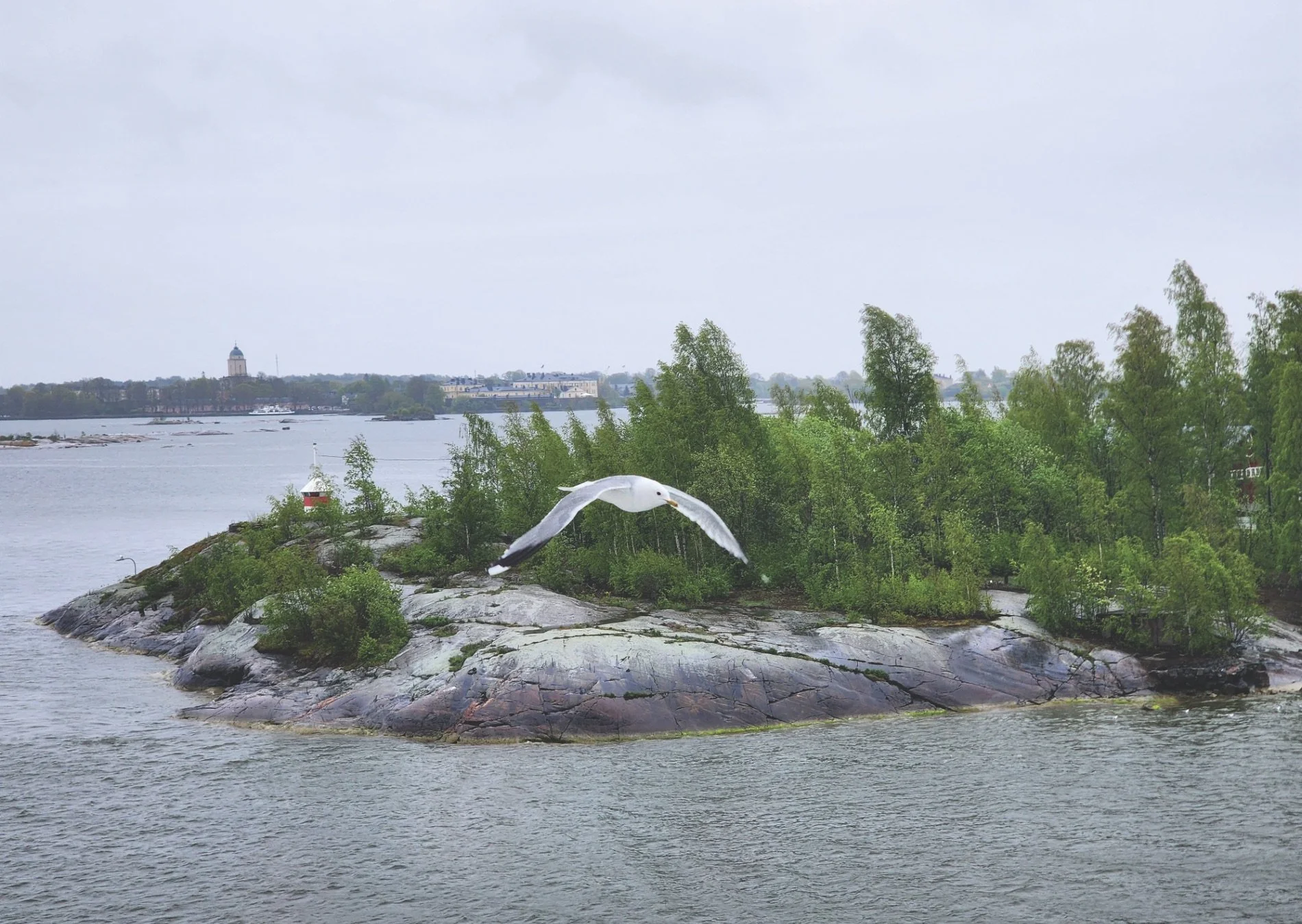In solidity
Tony Milne of Rough Milne Mitchell ponders the permanence of stone.
Edinburgh Castle in Scotland.
We are currently on the cruise ship MS Silja Symphony as it ferries us through some of the circa 267,570 islands that make up the archipelago of Sweden, en route to Helsinki. We sit in the bar, enjoying a floral IPA (recommended by the barman), as a fellow traveller of Finnish origin informs us that there are far better places to visit than the capital city of his country.
On the television in the background, Finland has gone 3-2 down in a world championship ice hockey game against the USA. When asked, by the same traveller, we quickly and smartly plead allegiance to Finland. It makes sense, as our new companions are strong Nordic types. The exception is a chap who is masquerading as the bar musician, strumming and singing, poorly, in the corner. Our effort yesterday at the ABBA Museum far surpassed this offering.
Like our new Nordic friends, some of whom appear hewn from stone, the rock outcrops of many of the islands we pass, physically and visually express their formation. As I sit, trying to block out the awful tones of the ship’s crooner, I pause to give thought to the landscapes I have experienced these past two weeks. In particular the presence of rock, the varied use of stone and the clues it gives to place and time.
It is regional, not only in a geological sense but in the craft of stonemasonry. Timeless, strong, robust, raw, sophisticated, warm, heavy, moody, cold and inviting and all the while a silent witness to life that has evolved on the stage it supports. Stone, one of the fundamental building blocks of civilisation over the centuries.
Geologically Edinburgh is a story of volcanism, upon which a city has been built from blocks, slabs and cobbles of sandstone and limestone. From the cobbled streets, the well-traversed rock outcrop of Arthur’s Seat to the foreboding walls of Edinburgh Castle, a rich tapestry of history unfolds. One can only imagine the graft in 1103 as the fortification of the city was chiselled from stone, much of which is still present today.
From Edinburgh we headed to Dublin. On skinny little country lanes and slightly wider roads, we navigate our way through the Irish countryside. At first, we are immersed in a pastoral landscape of hedgerows and trees that characterise Naas, Kildare, Kilkenny and Bunratty. Bucolic. We then head southwest, where hedgerows are replaced with dry stone walls that seemingly wind their way forever across hillsides and flats, demarcating fields and land tenure.
We admire the subtle variation, particularly in the coping, of the walls from Lahinch to Doolin to Burren. Dry stone walling that reflects centuries of tradition. Born from the need to clear land of the stone to enable agriculture, not only functional but walls that represent generational survival and adaption. With my curiosity piqued, I learn also about the ‘famine walls’; these walls tell a different story.
Stone and its use, a permanent physical and cultural expression of the countries we currently travel. The narrative of Helsinki awaits.
Stone walls of the Irish countryside.
The rocky Helsinki coastline.








